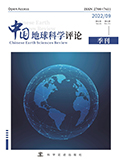

西藏是全国地质灾害最严重的省区之一, 地质灾害对经济社会发展的影响日趋显著。为研究西藏堆龙德庆区典型灾害泥石流的发育特征及孕灾地质条件, 本文基于1: 5万地质灾害风险调查评价成果, 在系统总结研究区泥石流灾害发育特征及时空分布规律的基础上, 选用ArcGIS空间分析方法探讨泥石流灾害与地形地貌、地质构造、工程地质岩组、水系密度、植被覆盖率等因素的关系。研究成果显示, 区内共发育泥石流灾害点117处, 灾害规模以小型为主, 主要集中发生在7-8月, 具有沿断裂构造、河流及深切河谷区集中分布的特征。地形地貌、地质构造、工程地质岩组、水系密度与泥石流表现出了不同程度的相关性, 流域面积越小, 沟道纵坡降越大, 流域内断层和水系 密度越大, 越有利于泥石流灾害的形成; 而易滑地层则为泥石流的发育提供有利的物源条件。泥石流灾害的形成与上述孕灾因子关系密切, 是多种因素耦合作用的结果, 可为研究区泥石流灾害的防治提供参考基础。
Xizang is one of the provinces and regions with the most serious geological disasters in China. The impact of geological disasters on economic and social development is becoming increasingly significant. To study the development characteristics and geological conditions of typical disaster debris flows in the Deqing District of Duilong, this article is based on the results of a 1: 50000 geological hazard risk investigation and evaluation. Based on a systematic summary of the development characteristics and spatiotemporal distribution patterns of debris flow disasters in the research area, ArcGIS spatial analysis method is used to explore the relationship between debris flow disasters and factors such as topography, geological structure, engineering geological rock formations, water system density, and vegetation coverage. The research results show that there are a total of 117 debris flow disaster points developed in the area, the scale of disasters is mainly small-scale disasters, mainly occurring in July and August, which characterized by concentrated distribution along fault structures, rivers, and deep river valleys. There is a varying degree of correlation between topography, geological structure, engineering geological rock formations, water system density, and debris flow. The smaller the watershed area, the greater the longitudinal slope of the channel, and the higher the density of faults and water systems within the watershed, which is more conducive to the formation of debris flow disasters; And the easily slippery strata provide favorable source conditions for the development of debris flows. The formation of debris flow disasters is closely related to the above-mentioned disaster prone factors, and is the result of the coupling effect of multiple factors, which can provide a reference basis for the prevention and control of debris flow disasters in the study area.